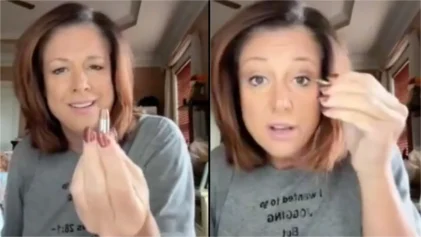One of the world’s largest diamonds, stolen from India in the 19th century, will not appear in the queen consort’s crown in the upcoming coronation of King Charles III in May. Experts believe the decision to not include the jewel is a step to preserve international relations between England and India who recently overtook its former colonizer to become the world’s fifth-largest economy.

As the world prepares for the official ceremony to crown Charles as the leading monarch over Great Britain and Northern Ireland, conversations regarding the 105.6-carat Koh-i-Noor Diamond have dusted up, wondering if the British will include the jewel in the pomp and circumstance of the day, the New York Times reports.
On Tuesday, Feb. 14, Buckingham Palace announced Camilla, Charles’ wife, will not wear the crown worn in 1937 by Queen Elizabeth for her coronation as queen consort to King George VI. That crown prominently features the controversial jewel, but Camilla will opt to wear a less opulent crown. One that belonged to Queen Mary, the queen consort from 1910 to 1936.
“The choice of Queen Mary’s crown by her majesty is the first time in recent history that an existing crown will be used for the coronation of a consort instead of a new commission being made, in the interests of sustainability and efficiency,” the palace said.
Prime Minister Narendra Modi, a spokesperson for the political party, said, “the use of the crown jewel Koh-i-Noor” would bring “back painful memories of the colonial past,” and questions about how it came into British possession.
Lauren Kiehna, a writer and historian on royal jewelry, said, “The Koh-i-Noor is a real, serious sticking point. I would imagine that Charles and Camilla would be keen to avoid additional criticism when possible, and Charles particularly has always seemed sensitive to the fact that jewels can carry significant symbolism.”
The history of the Koh-i-Noor is one of colonial larceny and cultural irreverence.
According to the Smithsonian Magazine, the jewel was discovered thousands of years ago in India’s alluvial mines, sifted out of river sands.
Members of the Hindu faith revered the rare gem as a beloved jewel of gods like Krishna. Because India was the only place where diamonds were found in the world until 1725, the jewel was seen as even more valuable and many neighboring empires would fight for possession of the jewel called “Mountain of Light.”
When the British East India Company took over the interior of the Indian subcontinent and snatched up more than just natural resources and trading posts, the kingdom also wanted the storied Koh-i-Noor.
“For the British, that symbol of prestige and power was irresistible. If they could own the jewel of India as well as the country itself, it would symbolize their power and colonial superiority. It was a diamond worth fighting and killing for, now more than ever,” Lorraine Boissoneault stated.
She continued, “When the British learned of Ranjit Singh’s death in 1839, and his plan to give the diamond and other jewels to a sect of Hindu priests, the British press exploded in outrage. ‘The richest, the most costly gem in the known world, has been committed to the trust of a profane, idolatrous and mercenary priesthood,’ wrote one anonymous editorial. Its author urged the British East India Company to do whatever they could to keep track of the Koh-i-Noor, so that it might ultimately be theirs.”
Ultimately, in a political coup, the British crown discovered the diamond would be with the 10-year-old monarch, Duleep Singh, and forced him under duress to sign a legal document that would give the empire the Koh-i-Noor and all claim to sovereignty — then giving the jewel to Queen Victoria as a gift.
Hundreds of years later, many wonder why the British still are in possession of the jewel. The return of the diamond, which is housed in the Tower of London, has been lobbied for by recent Indian governments. India is no longer a territory ruled by Great Britain but has even recently become the world’s fifth-largest economy.
Still, those in power are not interested in making right, a colonial wrong. In 2010, Prime Minister David Cameron vowed that the gem would “stay put” in England.
In the court of public opinion, many believe the jewel should be returned.
A Twitter user called My Royalty Account, posted, “The issue of stolen Crown Jewels isn’t going to go away. No royal will ever be able to wear the Koh-i-Noor again without generating enormous controversy. It should be returned to its rightful owners.”
One person offered that maybe the new king could return it as a gesture of good will, tweeting, “If the Brits went to India as ‘traders’ perhaps King Charles III would kindly re-gift the Koh-I-Noor back to India as a gesture of goodwill and in the interests for future ‘trade’ deals with India?!”
Dr. Shola Mos-Shogbamimu believes that will never happen, writing this is an issue of thievery.
“King Charles has NO intention of righting the wrongs of Britain’s colonialism. The Koh-i-noor diamond should be returned to India with apologies,” he tweeted. “It never belonged to Royal Family. Camilla not wearing it in coronation isn’t solution. Disgusting display of upholding White supremacy.”
This is not the first time the public has reacted to the British stealing diamonds and other resources from other parts of the world they believed they were superior to.
After Queen Elizabeth was laid to rest, campaigns were launched for the return of jewels taken from South Africa, specifically diamonds connected to the British Sovereign’s Royal Scepter and the Imperial State Crown.
One is called “The Star of Africa or Cullinan” and is a 530-carat fine-quality colorless diamond. This gem, which can be found on the scepter, is the largest cut of its kind in the world. The other is called “The Star of Africa II or Cullinan II” and is a 317-carat diamond, which can be found in the aforementioned crown.
Like the calls for the return of the Koh-i-Noor, many wanted these precious stones back in their motherland.
“We need what’s ours,” wrote Twitter user, @Lxngelo, who lives in Cape Town, South Africa.
Some like the Economic Freedom Fighters, a pan-Africanist political party in South Africa, spoke directly to the new king, asking him to give it back immediately.
In their remarks, they were clear, “We do not mourn the death of Elizabeth, because to us her death is a reminder of a very tragic period in this country and Africa’s history.”
The statement continued, “Britain, under the leadership of the royal family, took over control of this territory that would become South Africa in 1795 from Batavian control, and took permanent control of the territory in 1806.”
All three diamonds remain in Great Britain as part of the royal family’s jewels.


